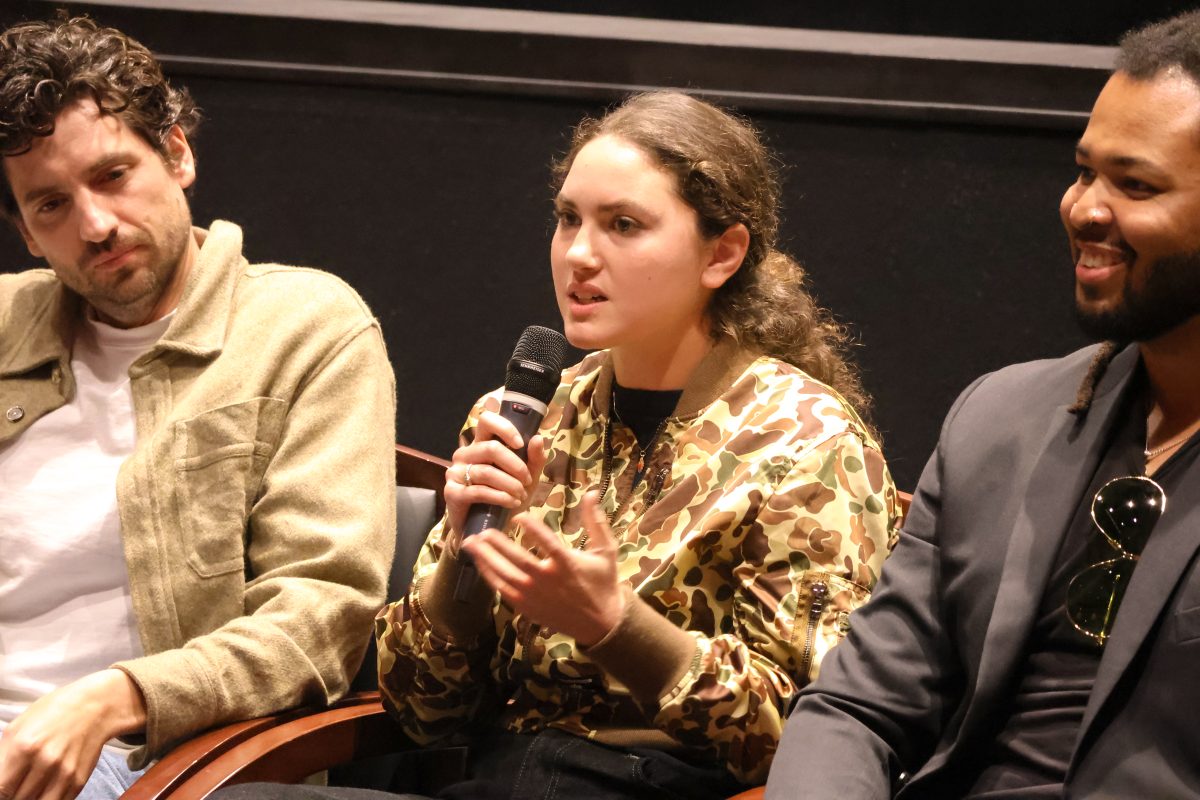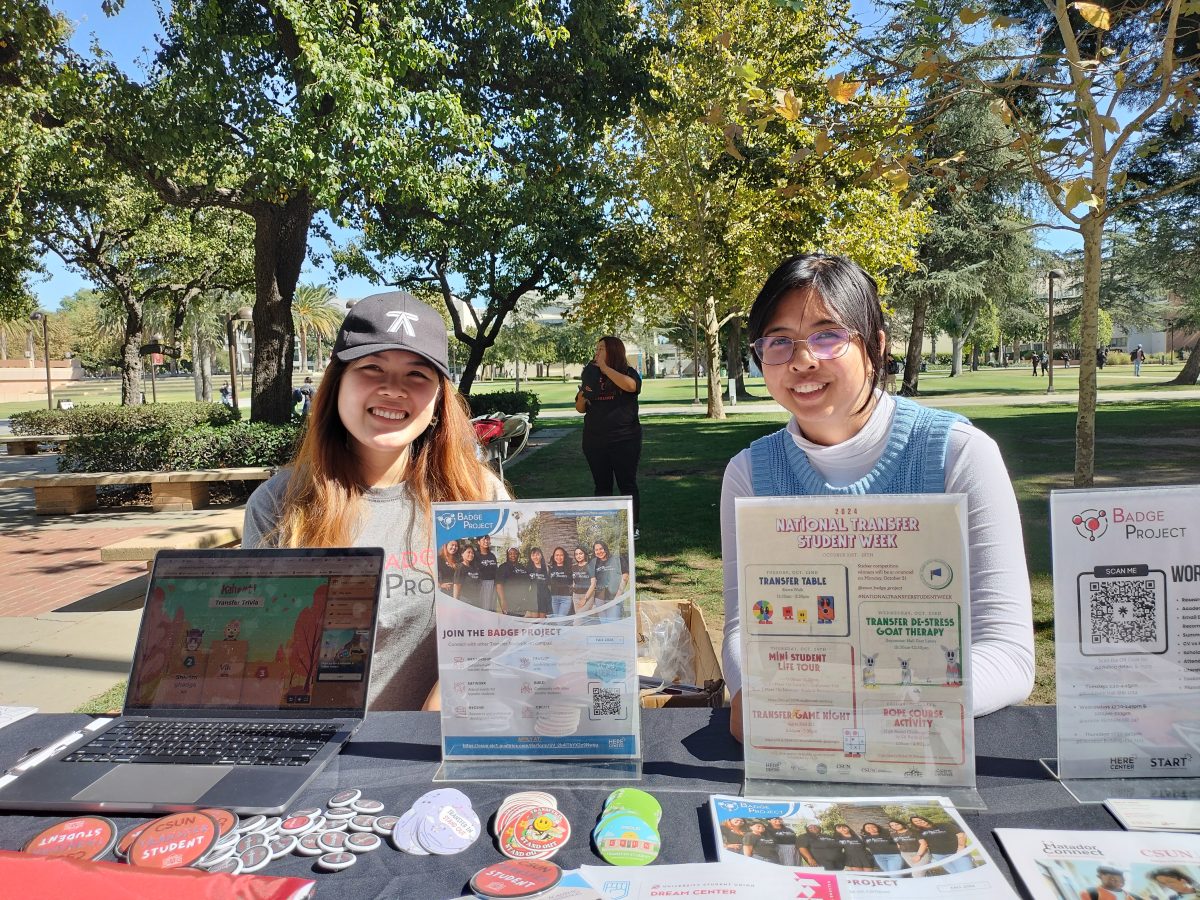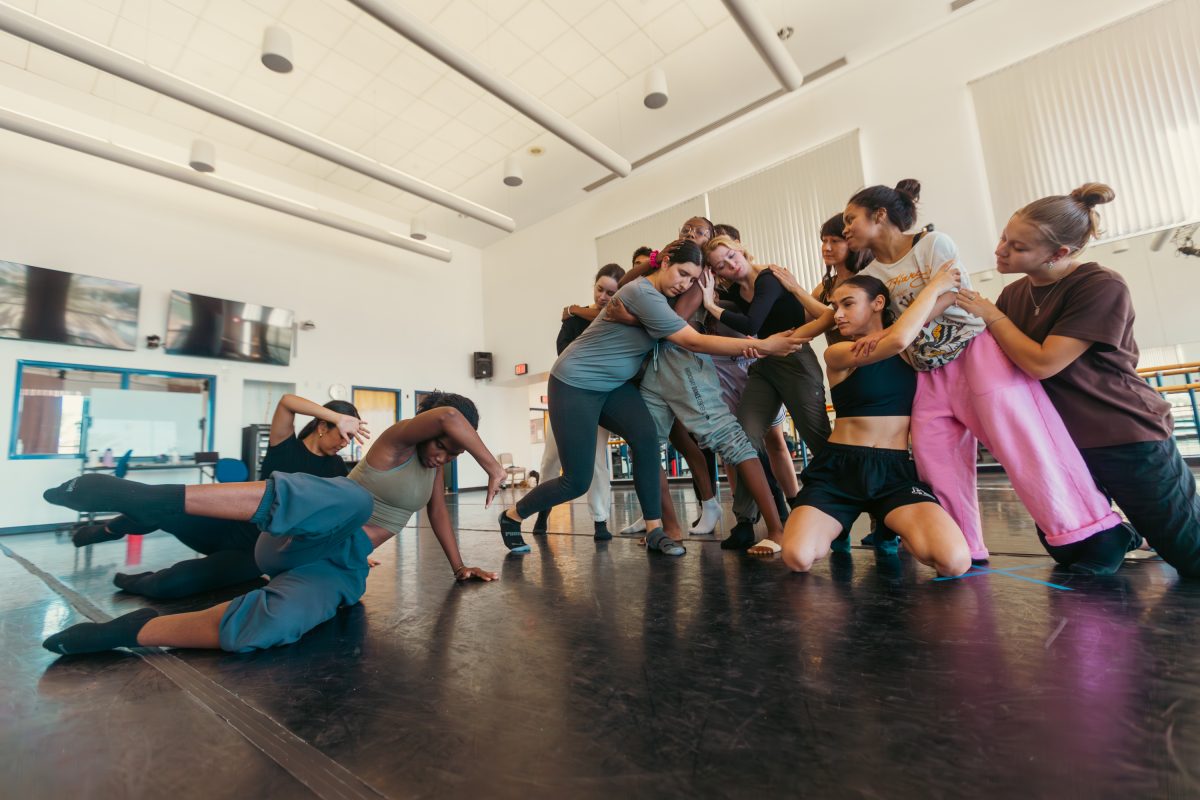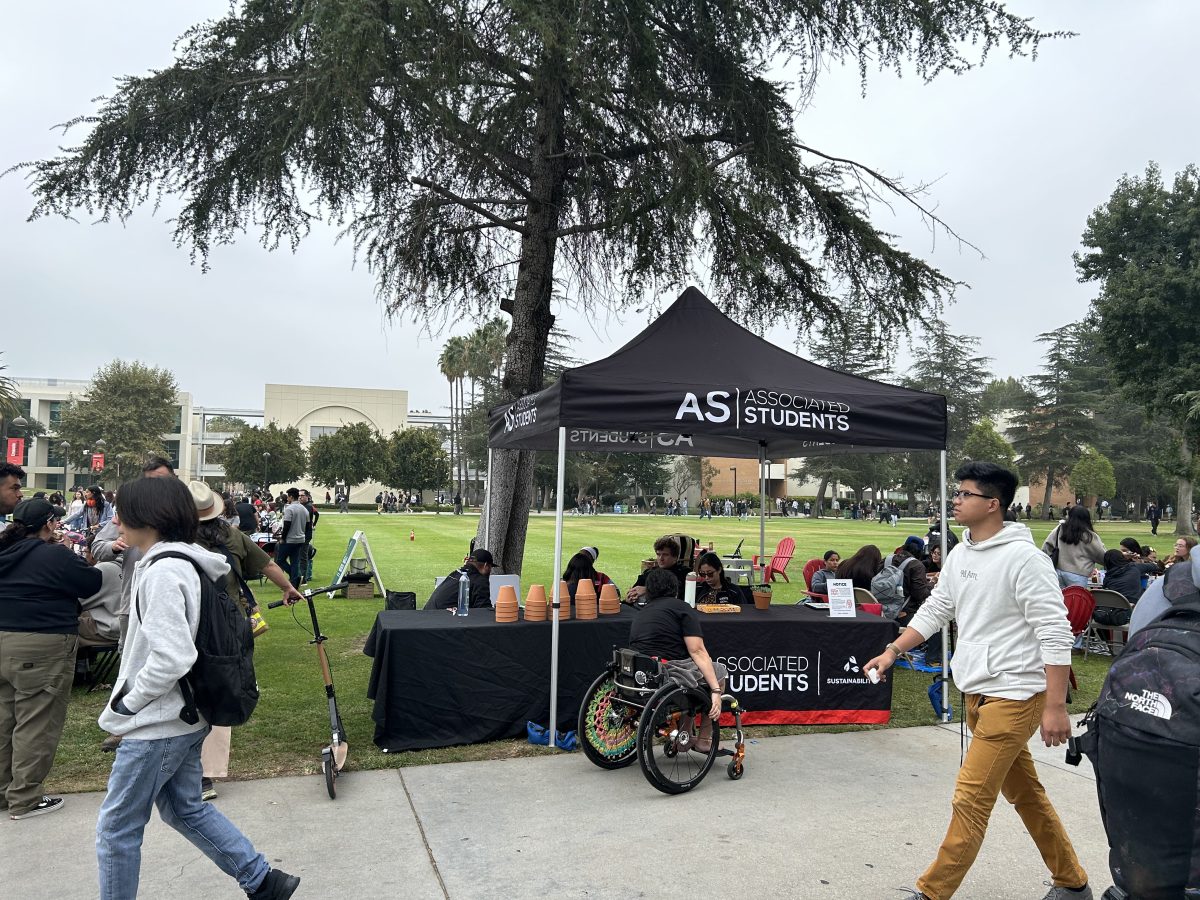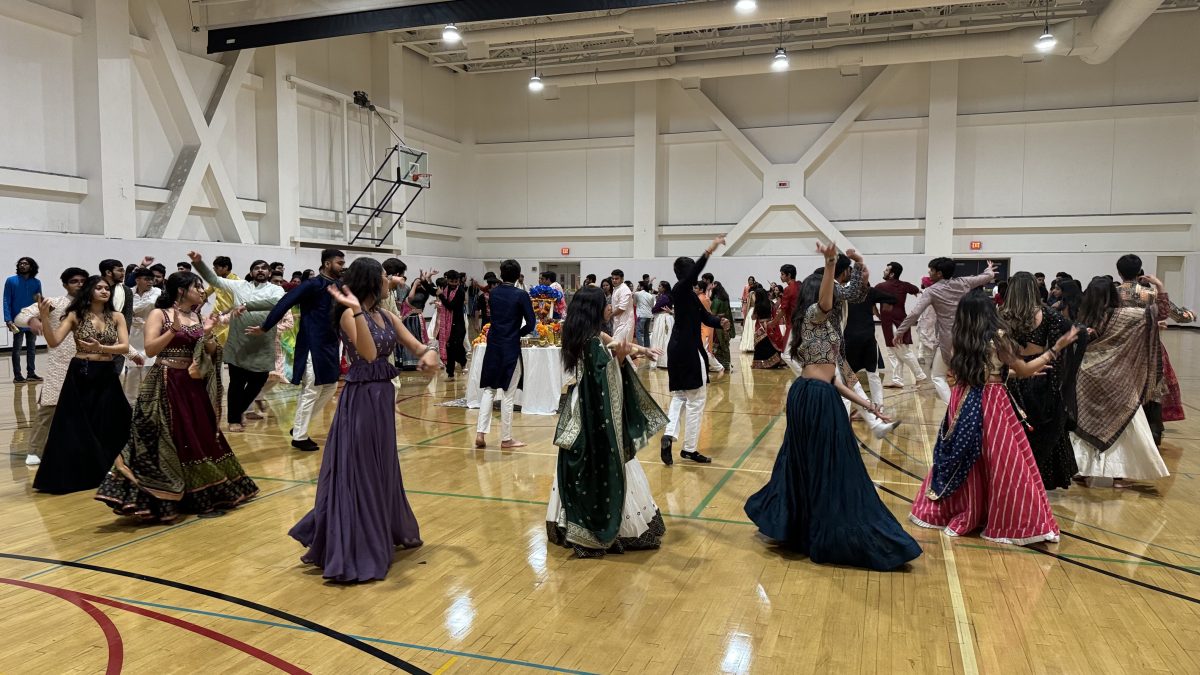Despite receiving yet another dismal rating from the latest Statewide University Police Association (SUPA) leadership survey, CSUN Chief of Police Anne Glavin and university officials are satisfied with the state of CSUN Police Department (PD) while questioning the validity of the survey.
The survey, which received responses from 21 out the 23 CSU campuses, ranked the CSUN PD command staff the lowest with a score of 1.64 out of a possible high score of five and marked the third straight year with CSUN being ranked at the bottom.
Jeff Solomon, SUPA president, said the survey’s purpose is to assess management, similar to the way officers are evaluated by management.
“In the same way management evaluates us, it give our personnel an opportunity to evaluate management,” Solomon said.
While the survey gave Glavin the lowest ranking among police chiefs with a score of 1.53, Glavin questioned the survey’s methodology and said it is not an accurate indicator of the state of the police department.
“My official comment on that survey is that it’s, number one, not scientific,” Glavin said. “Number two, it’s not reflective of everyone in my department. And number three, it’s agenda based.”
Solomon did not disagree with part of Glavin’s statement when alerted of her comments.
“I agree it is not scientific, but we never said it was scientific,” Solomon said.
This is not the first time a CSU police chief has questioned the credibility of the survey.
In the 2012 Chico State PD re-evaluation survey, the survey said there were 16 responses, despite Chief Robyn Hearne saying there were only 15 SUPA employees at the time of the survey.
Despite Solomon questioning the truthfulness of Hearne to the Daily Sundial and saying she was approached about her comments, Hearne challenged Solomon’s recollection of the events. Hearne said Marc Reed, Chico State’s SUPA representative, confirmed there were 15 members at the time of the survey to the Chico Enterprise-Record.
“SUPA did not approach me and has never communicated anything other than forwarding their survey,” Hearne said. “Rep. Marc Reed correctly confirmed the 15 members.”
With the exception of the 2012 re-evaluation surveys, which were administered to police departments that scored below 3.5, statewide surveys conducted in 2011, 2012 and 2013 do not disclose the level of participation.
Despite contacting several CSUN PD officers, no officers wished to give a comment regarding SUPA or its survey.
While quick to dismiss the credibility of the SUPA survey, Glavin said there are numerous surveys and assessments required by both university and accreditation officials to evaluate the internal climate of the police department.
The International Association of Campus Law Enforcement Administrators (IACLEA) just recently reaccredited CSUN PD after a thorough evaluation process.
The department is officially accredited for four years, beginning May 9.
“As an accredited department, we have professional assessors come in every three years and in order for us to get reaccredited, they go through this department top-to-bottom and talk to everybody,” Glavin said. “From patrol operations, how we bag evidence, taking assessment of what the community needs, implementation of crime prevention education, whether we do those, do they have impact, are they attended, investigations to training, every phase of our department is looked at.”
Colin Donahue, vice president for the division of administration and finance, said the accreditation process is one of the major tools the university uses to assess the state of the department.
“When it comes to assessing the department, that is at the top of the food chain,” Donahue said.
The latest university survey, which had a nearly 90 percent participation rate among police department employees, was mostly positive, but not without some concerns.
“There was one survey of staff saying they’d like to have more say on things that affect them,” Glavin said. “That tells me that we need to do more strategic planning and while we have done it, we probably haven’t done it enough.”
Donahue echoed Glavin’s sentiment regarding the concerns, although he said the university’s ultimate goal is find ways to get better.
“We wanted to find whether our department is aligned with our mission and values because we want to look at what we can to do to get better,” Donahue said. “Our employees need to be engaged because they want to be involved in fulfilling work.”
While Glavin knows she and the other command staff are responsible for setting the direction of the department, she admits the command staff needs to do a better job of involving the officers.
“Ultimately, me and my command staff have to make the final decisions, but we need to do more to ask instead of just making decisions,” Glavin said.
Assessing the performance of the CSUN PD
To assess the performance of the CSUN PD, Glavin said there is one question that matters most.
“Are we meeting the community’s needs?” Glavin said. “We figure that out by the comprehensive assessments required by accreditation.”
As part of the accreditation process, the IACLEA assessment team opened up phone lines from 10 a.m to 12 p.m on April 7 for community feedback on the CSUN PD.
While the team received only six responses during the two-hour window, the responses from the university community were overwhelmingly positive.
“Callers from the university identified the department as being professional, cooperative, proactive, compassionate and providing a valuable service to the university community,” a portion of the Public Information Activities section in the IACLEA accreditation report read.
Overall, Donahue said there were 153 core compliance items as part of IACLEA accreditation, and in none of the items was the police department non-compliant.
Donahue also said the university gets feedback from the community every few months to get a better understanding of how the police department is perceived.
“We have community meetings every few months and the feedback we get is outstanding,” Donahue said. “They feel we have a police staff that understands their needs and concerns.”
The 2013 Campus Safety and Security Survey, which has its sampling methodology determined by The Office of Institutional Research, randomly sampled 25 percent of students and 50 percent of both staff and faculty
Out of the 720 responses from students, faculty and staff, the survey revealed 47.6 percent felt somewhat safe or while 45.1 percent felt very safe.
The 2013 survey represents a drop in feeling of safety from the 2010 survey, which reported 51.9 percent of participants saying they felt safe, while 44.4 percent felt somewhat safe.
In rating the competence of CSUN PD officers in handling both emergency and non-emergency situations, 32.8 percent of survey participants answered good while 22.6 percent answered excellent and 18 percent answered satisfactory.
The 2010 survey, which randomly sampled one in every six students from the campus population and one in every six faculty and staff out of a pool of 1,000, yielded procedural changes after visibility scores from 401 survey participants were low.
“Three years ago, one area of concern was visibility in which our ratings weren’t so good,” Glavin said. “We switched to something called multidimensional patrol and trained officers to ride bikes while increasing the number of foot patrol.”
The switch to multidimensional patrol was predicated by the idea that these methods are more visible than police cars.
“One of our problems was that our main mechanism for patrol was police cars,” Glavin said. “Those are not as visible as say bicycle patrol, motorcycle patrol or other things where the community can actually see you out there.”
While the switch may not have been popular among some officers, evidenced by some of the comments in the SUPA survey, Glavin was more concerned with addressing the needs of the community.
“We had some officers who didn’t like being taken out of the black and whites because they felt that’s where they belonged,” Glavin said. “My response to that is while they might not like it, it’s our job to be responsive to the community.”
Despite the changes made, visibility still remains one of the top five concerns for survey participants and is reflected in the 2013 visibility ratings.
In rating the visibility of the CSUN PD, survey participants responded either frequently or occasionally in 75 percent of responses, down from 78.1 percent in 2010.
Glavin said the police department also seeks feedback from those who request assistance in addition to sending out the Campus Safety and Security Survey.
“Every fifth report, a survey is generated which asks response time, did they show up in a timely manner, how friendly the officers were, were they helpful and how we’re you treated,” Glavin said.
In cases where survey ratings are below a four or five, Glavin said a follow-up is generated to determine why the person was not satisfied.
Addressing missteps and current concerns
While Glavin remains positive about the current state of the police department, she still remains disappointed with the handling of the suspected gunman incident on April 24 of last year.
“During the period of time when we were searching for the gunman, there was just a long period of time where people were just out of the building and a lot of the people got irritated,” Glavin said. “We literally had a lot of people milling around and we didn’t communicate with them enough to say this is what’s going on.”
Given that survey participants have ranked how the police respond to crimes in progress as the most important service, Glavin said the incident is one that has the police department still kicking itself over.
In admitting the police department’s mistake, Glavin said the incident allowed the police to evaluate their performance and implement changes so the same mistakes wouldn’t happen again.
“In a couple of places, we didn’t have in place the mechanisms to track that with support folks on campus like building marshals,” Glavin said. “For every major incident like that, we always debrief with the sole purpose of assessing ourselves and how we could have done better.”
One of the procedural changes has been the implementation of formal checklists so that incident commanders can go down the list to make sure they’ve addressed all matters of importance.
Glavin also said she would like to see an improvement in handling vandalism and bicycle theft, which have been increasing the past few years.
“I’d like to see us do a better job solving vandalism, which has been going up the past few years and it’s been very frustrating.” Glavin said. “We’re not catching at the level or amount of vandalism and it’s happening all over, outside buildings, inside restrooms and locker rooms.”
Glavin said the police department has plans in play to handle vandalism, but given the nature of crime, it’s difficult to catch someone in the act without assistance from the public.
“The way you get rid of that is removing graffiti really quickly because the longer it stays up, the more it encourages others,” Glavin said. “We’ve established a great relationship with PPM (Physical Plant Management), but we encourage the public to alert us anytime they see someone with a spray can.”
Bicycle theft is another crime that has seen large uptake the past couple of years.
“This place is like a shopping center for bike thieves,” Glavin said. “We’ve come up with a bunch of undercover plans to stay on top of it, but it’s a difficult problem to stop.”
Glavin said she could not elaborate further without compromising the undercover initiatives.
Donahue said bicycle theft is one area he would like to see improved given the increasing rate of incidence.
“The biggest issue is the bicycle thefts because it is the most prevalent thing we have,” Donahue said. “If we could get students to use the U-locks, it would decrease theft drastically.”
While vandalism and theft have become a concern, crimes on campus have steadily decreased since 2011.
Crime statistics from the 2013 Clery Report show the total number of crimes declining from 648 to 526 to 477 from 2011-2013.
While the decline in crime has not gone unnoticed by university officials, who see the statistics as one of the promising signs of the job the CSUN PD has done, Donahue says the most important consideration is how the department meets the community’s needs.
“We have an outstanding police department, validated by accreditation, by the campus community and outside community,” Donahue said. “Ultimately, it’s not about focusing on what we do wrong, but how we can serve the community better.”

